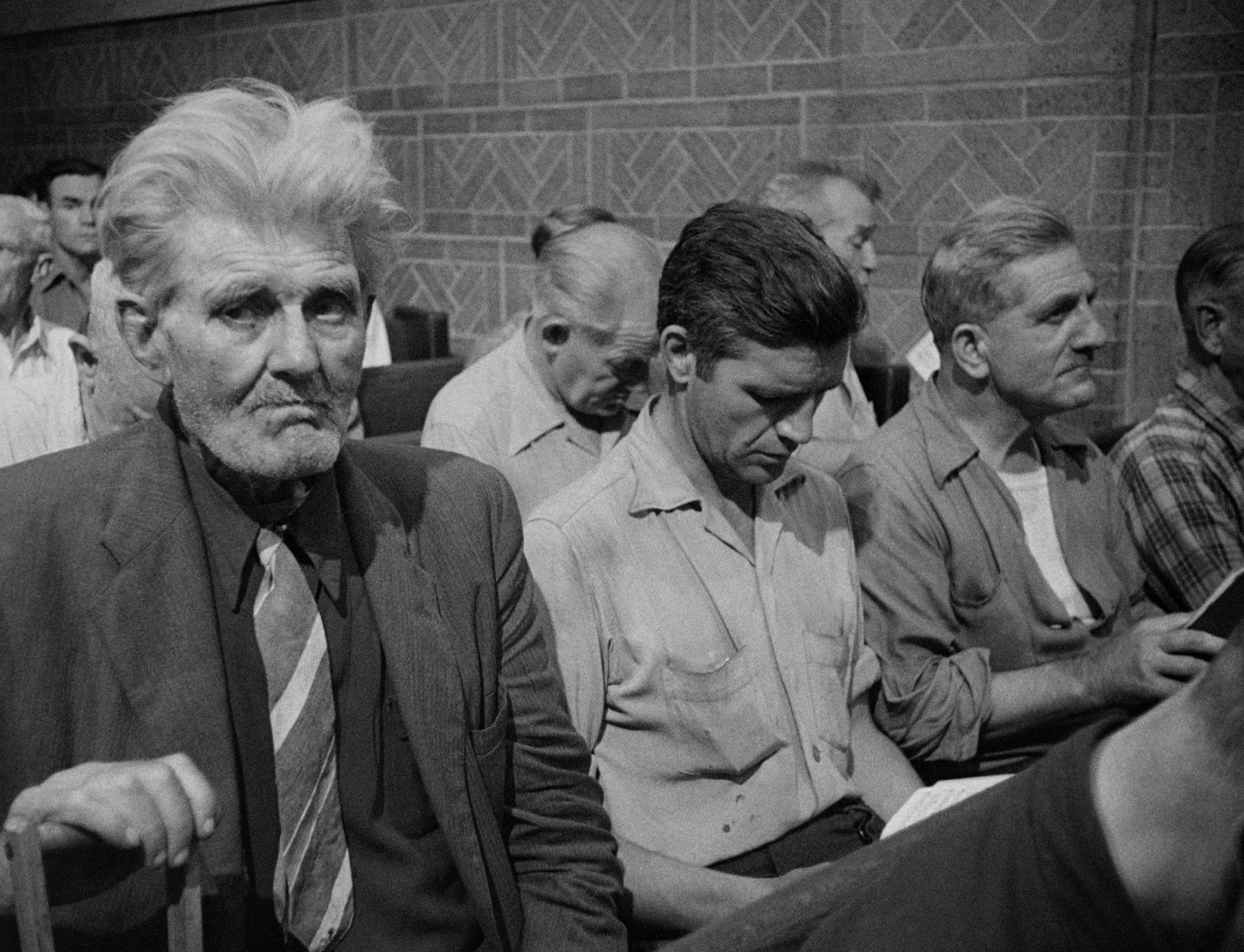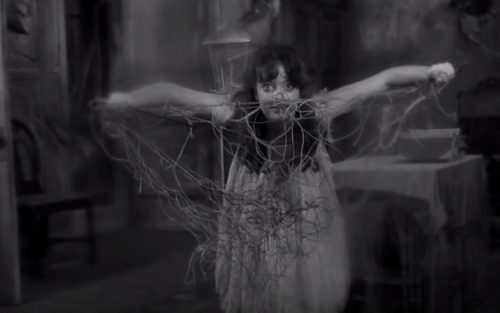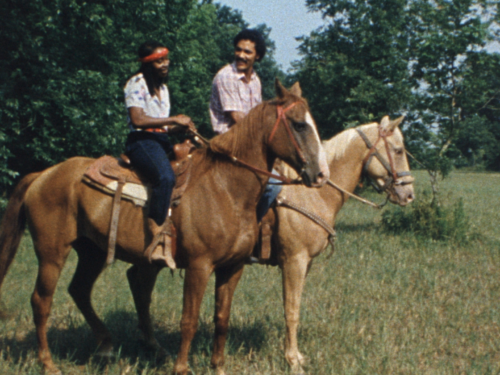With On the Bowery, Lionel Rogosin and his collaborators brought a new rhythm to the art of filmmaking in America
“It is the fear of direct contact with the uncontrollable present that motivates the flight into concept. The Filmmaker seeks the safety net of an idea, or something to accomplish that is already known… If we do relinquish control, we suddenly see a hidden world, one that has existed all along right in front of us. In a flash, the uncanny presence of this poetic and vibrant world, ripe with mystery, stands before us. Everything is expressing itself as what it is. Everything is alive and talking to us… The unknown is pure adventure.”
— Nathaniel Dorsky, Devotional Cinema
“Making On the Bowery taught me a method of molding reality into a form that could touch the imagination of others. The total reality of a community or a society is so vast that any attempt to detail its entirety would result in nothing more than a meaningless catalog of stale, factual representation — a result which I call ‘documentary.’ Flaherty’s great work has no more to do with ‘documentary’ than great poetry has to do with the factual report of a sociologist.” — Lionel Rogosin
The importance of Lionel Rogosin’s On the Bowery (1956) lies not only in its status as one of America’s foundational independent films but in its openness towards its subjects and in its style. On the Bowery takes place over the course of three days on New York’s skid row. An ex-railroad worker, Ray (Ray Salyer), arrives in the city with a suitcase in hand and looking for work. But first, he finds a drink. He falls right in with a group of Bowery drunks, one of whom is Gorman Hendricks. Gorman helps Ray pawn some of his belongings to pay for a flophouse and more drinks, and the next thing Ray knows he is waking up on the sidewalk, robbed of his suitcase by Gorman, who has used it for his own lodging collateral. So begins Ray’s New York odyssey: searching for work in the day, sometimes finding it, followed by nights wrestling with the temptation to hit the bottle.
Based on Rogosin’s own experience of immersing himself in the culture of the Bowery, the film is compassionate while being entirely unsentimental. Rogosin avoids any sort of PSA-effect in dealing with the poverty and addiction of his characters. He came to filmmaking after serving in World War II. He witnessed the effects of fascism and vowed to continue fighting evil social forces beyond the war through his films. This led Rogosin to document not only the ills of his home country, but to work on a global scale exploring apartheid in South Africa (Come Back, Africa, 1959) and the history of international war crimes and nuclear devastation (Good Times, Wonderful Times, 1966).
Taking influence from Robert Flaherty and Italian Neorealism, On the Bowery, Rogosin’s first film, is a hybrid work of narrative and “documentary.” It not only blurs the distinction between fiction and non-fiction, but it forgoes nearly every standard of Hollywood-style narrative filmmaking and the prevalent documentary forms of its time. Rogosin initially planned to improvise the film. From the start, he wanted to use actual Bowery residents for the cast, and before shooting he became acquainted with the men featured in the film. He would drink with them and have them over to his home. Even after the film was completed, he continued to support multiple members of the cast, most notably lead Ray Salyer, who he tried to help sober up to pursue an acting career. Salyer eventually disappeared and was never seen again.
Early on, Rogosin brought writer Mark Sufrin and cinematographer Richard Bagley on board. Fittingly, he met them in bars. Bagley had previously lensed Sidney Meyer’s The Quiet One (1948), which is widely considered the origin point of American independent film. According to Rogosin, Bagley himself was a “wild alcoholic” and a Bowery regular. The project was very close to depicting Bagley’s own experience, as shooting took place in the actual bars, missions, and flophouses that the men on screen frequented in their daily lives. As with many of the men in the film, Bagley died of alcoholism a few years after On The Bowery was completed.
When the improvisational approach failed to produce the desired effect early on, the filmmakers adapted. They composed a thin plot outline that would guide the production without impeding the directness and naturalism they sought to foster on screen. Rather than initiate more artificial means of controlling what took place on set, they went out of their way to accommodate their non-professional performers. On location, they developed a flexibility in their shooting style, making due with awkward angles and dangerous vantage points, such as placing cameras atop the chicken wire ceilings of the flophouses, in order to keep a distance from their subjects to maintain verisimilitude for their performances.
On the Bowery focuses on the types of characters who were not only left out of most American movies at the time, but were, and continue to be, relegated to the peripheries of society. The opening sequence masterfully places the derelict Bowery dwellers within a montage of New York street life. They’re shooed off park benches by policemen and rounded up in a paddy wagon. Others wake up in a daze to the bustle of working America passing them by. Throughout the rest of the film, Rogosin draws us into the rhythm of their everyday lives and the various hardships they face with little hope of overcoming them. Bowery shows the highs of their nights out drinking and telling wild stories to their buddies and doesn’t shy away when moods swing and the liquor takes over for the worst.
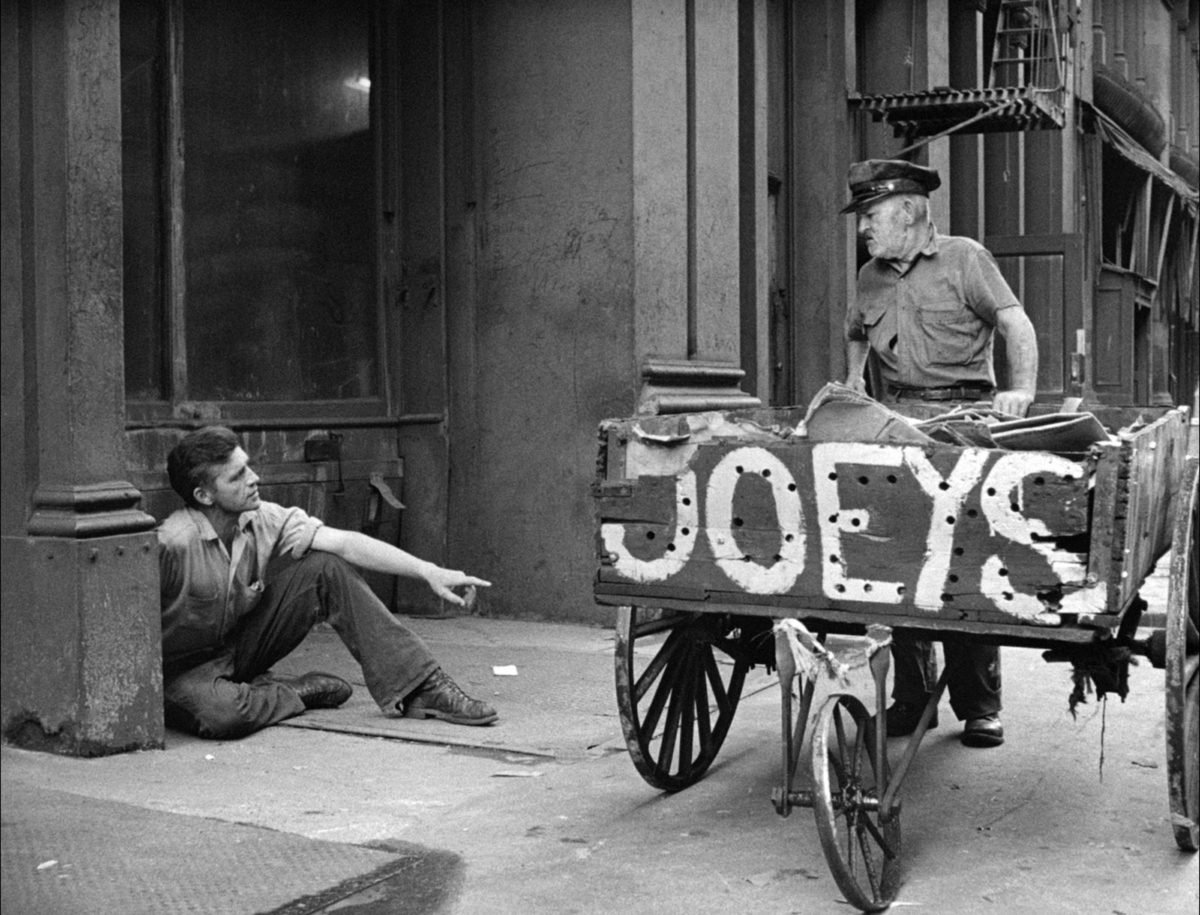
Upon its premiere, the film was a critical success abroad in Europe. But Bowery’s unflinching view into the less flattering corners of 1950s America were incredibly rare at the time. The film caused its share of controversy with American audiences. When the film played in Italy, Rogosin was ignored by an American ambassador who felt he had painted a negative vision of the United States. Rogosin also claims that the State Department attempted to place restrictions on the film to keep it from being shown. Despite the film being nominated for an Academy Award (Best Documentary Feature), the mainstream critical response also caused problems for domestic distribution. Self-proclaimed “cheerful film reviewer” Bosley Crowther’s New York Times blurb scoffs at the “considerable chatter in more arty film circles” regarding On the Bowery, before describing Rogosin’s depiction of “sordid” and “pitiful” New York street life as a “dismal exposition.”
Along with the challenge it presented with its unromantic depiction of downtrodden alcoholics, On the Bowery is also operating in a different cinematic language than the one a viewer like Crowther would have been accustomed to and comfortable with at the time. When taking into account how uncommon a film like this was for an average moviegoer to experience in 1956, On the Bowery should not only be considered within the context of independent narrative filmmaking — of which it was yet to be regarded as a pioneering example, along with The Quiet One and Morris Engel’s and Ruth Orkin’s The Little Fugitive from a few years prior in 1953 — but also in line with the Avant-Garde cinema that developed in New York during the first half of the century. Of particular relevance are the City Symphonies, such as Manhatta (Paul Strand and Charles Sheeler, 1922), Skyscraper Symphony (Robert Florey, 1929), and In the Street (James Agee, Helen Levitt, and Janice Loeb, 1948).1 While these experimental works are certainly aiming for something different than Bowery, it is beneficial to look at these films for the ways they approach the sensory experience of being in New York City.
These earlier films often abstract Manhattan into two general extremes of perspective. In Manhatta, lines from Walt Whitman’s poetry are interspersed between majestic and mostly still shots from atop New York’s giant skyscrapers. People are present, but they appear more like ants from the remote positions of the camera. Skyscraper Symphony places the camera on the ground, looking up at the tops of the same monumental structures of Manhatta, yet the film depicts them as overwhelming monoliths, avoiding all traces of the humans they cast their giant shadows over. Twenty years later, In the Street brought a more intimate approach to New York City in its ground-level depiction of the people of Spanish Harlem. It is a film composed almost entirely of close-ups on faces and portraits of shopkeepers at work and children running around the neighborhood. The distanced views in Manhatta and Skyscraper Symphony pull away from the bustle of the streets and create a sense of meditative abstraction. In the Street places us right in the thick of the crowd and emphasizes the individuals and communities who populate the city.
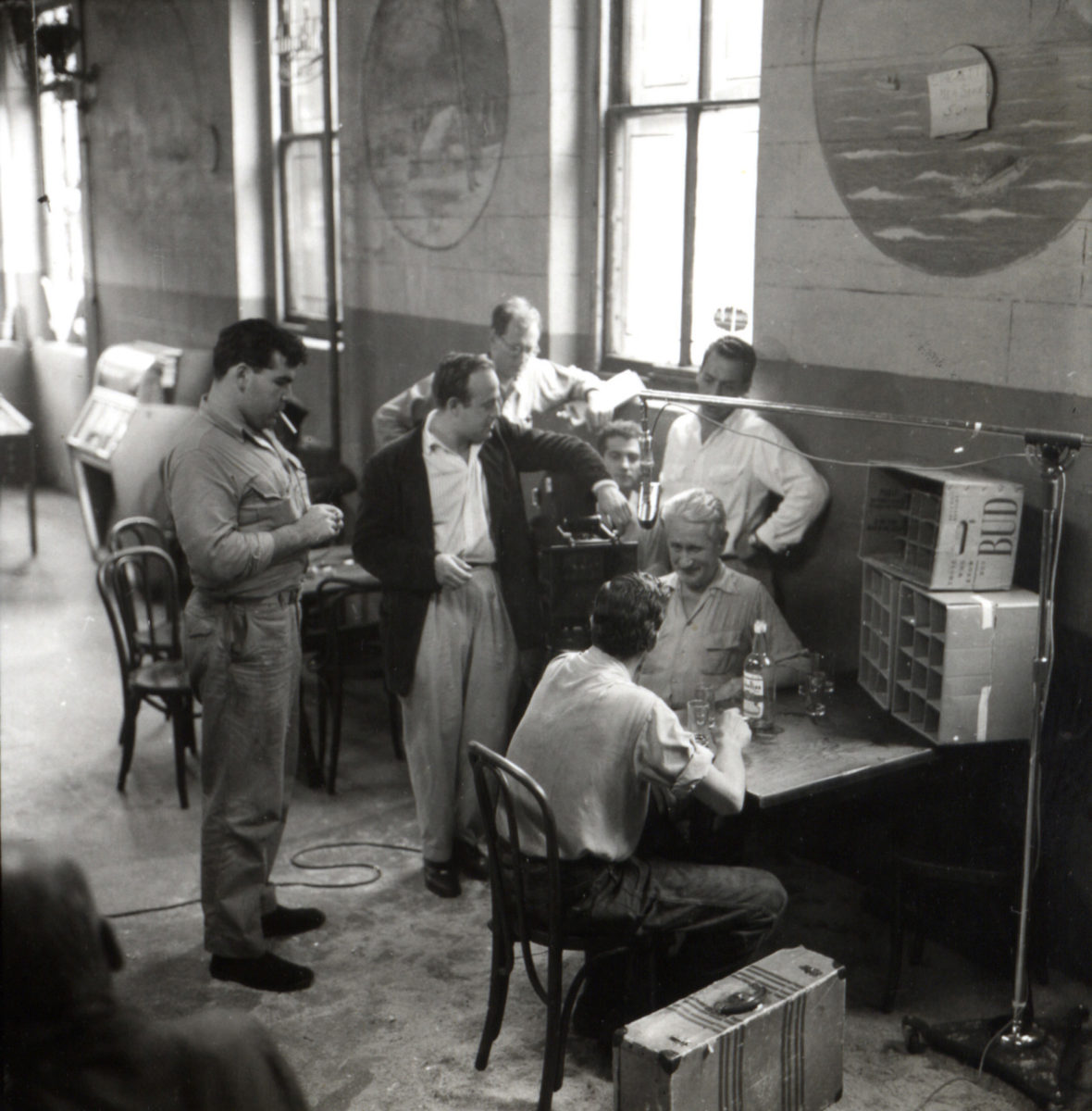
With On the Bowery, Rogosin brings these two extremes of vision together. He grants us both wide-eyed views of city living that frame his characters within the expanses of Manhattan and the Bowery, and extended montages of faces that trace every crease and wrinkle as if they were narratives unto themselves. We experience both the microscopics of the individual struggles of the Bowery men as they play across their faces and slur out in unrefined speech, while the street and barroom sequences pull us out to a broader perspective on their existence within the city and community. On the Bowery shares a great deal with the earlier experimental works in exploring the connections between these people and their environments, but it develops a crucial concern for how they interact and express themselves amongst each other and when caught in private moments that would inspire a new tradition in American filmmaking; It’s an impact that shows in the work of direct independent film descendants John Cassavetes and Shirley Clarke, through to contemporary artists like Khalik Allah.
There is a similar brilliance in the contrast between the movements from scripted, “acted” scenes and the caught-on-the-fly naturalism of the street sequences. The film’s style captures both the external transience of life on the Bowery streets, as well as the internal conflict of an alcoholic soul. Ray’s struggle with alcohol is shown to be cyclical: a tragic routine of striving for some form of structure and sobriety, succumbing on a nightly basis to the pressures of addiction and diving back into the bottle, then waking up in the morning and convincing himself to do it all over again. The use of true-blue Bowery drinkers as actors adds to the disorienting effect of the cyclical nature of the film as well. The stilted deliveries of dialogue during bat-away-the-sun morning conversations and the performers attempts at “sticking to the script” mirror the characters’ shaky graspings towards a structure beyond the one they are rutted into from their alcoholism.
As with the best Italian Neorealist films, Bowery navigates a delicate visual balance between the structured narrative elements and the textures of unscripted life within the same image, often allowing the peripheral elements to overtake the central drama. In the film’s most famous sequence, a raucous barroom blowout in the final act, Bowery turns its narrative over to the wildness of the environment. Extras begin to overwhelm the frame and obstruct our view of the action involving Ray and Gorman. Rogosin, who likened the scene to an orgy, cedes control to the massive crowd, creating intricate and dense compositions by placing his “actors” within the uncontrollable scene that unfolds.
Of course, creating that formless feeling takes the most effort and care of all from the filmmakers. On the Bowery brought a new sense of rhythm to American filmmaking by showing that there were great potentials to be explored when traditional plots and the standardized techniques of the studios were abandoned. The way Rogosin and his collaborators let their subjects be and gave them the time and space to allow themselves to stand for their own expressions of who they are and what their lives mean without any cinematic romanticizing, down-gazing, or didactic pity to influence viewers remains truly revolutionary to this day.
Purchase On the Bowery on Blu-ray here
Stream On the Bowery on Amazon Prime, Kanopy, or The Criterion Channel
Stay up to date with all things Split Tooth Media and follow Brett on Twitter and Letterboxd
(Split Tooth may earn a commission from purchases made through affiliate links on our site.)
- In the Street is particularly relevant to the history and production of On the Bowery for other reasons as well. Rogosin initially reached out to James Agee about writing the script for Bowery. Tragically, the film critic and novelist died before they could work together. Helen Levitt, who also worked with Agee and Bowery cinematographer Richard Bagley on The Quiet One, was hired to edit the film. She was fired for what Rogosin described as communication issues. Carl Lerner (editor of 12 Angry Men) completed the final edit.

